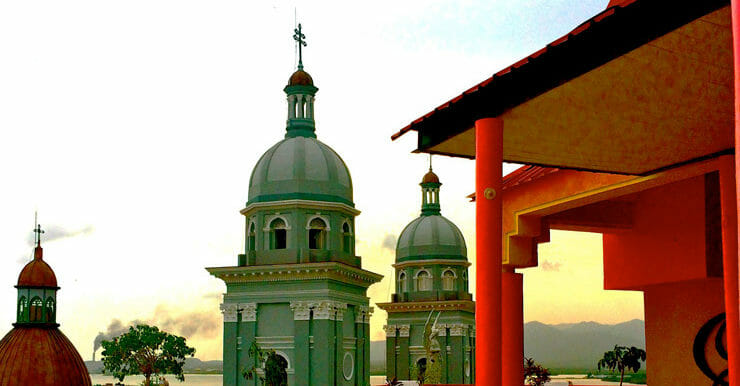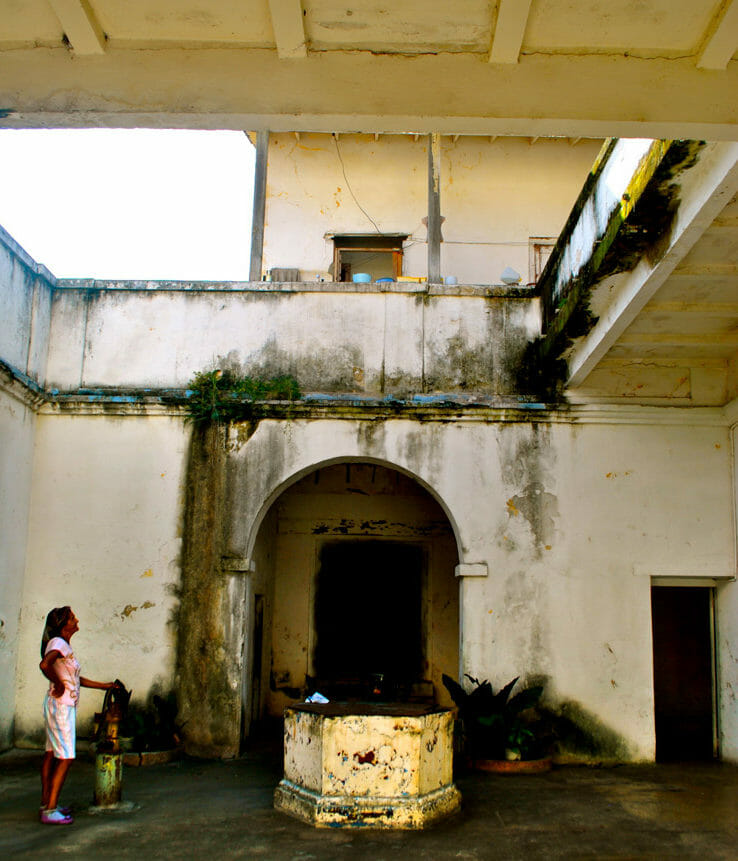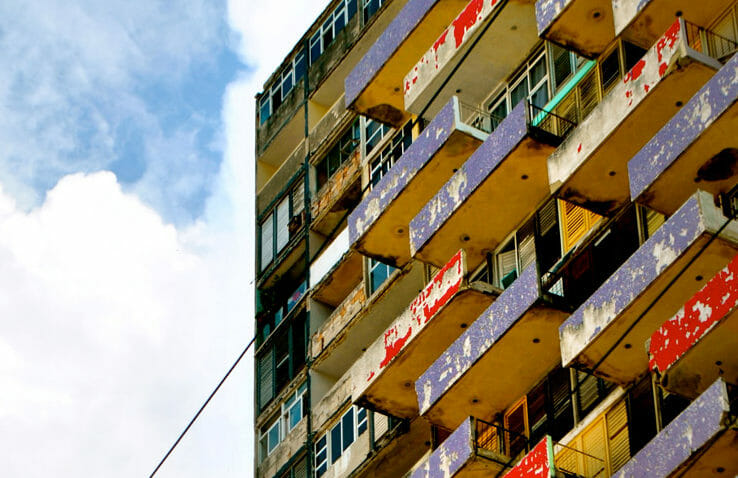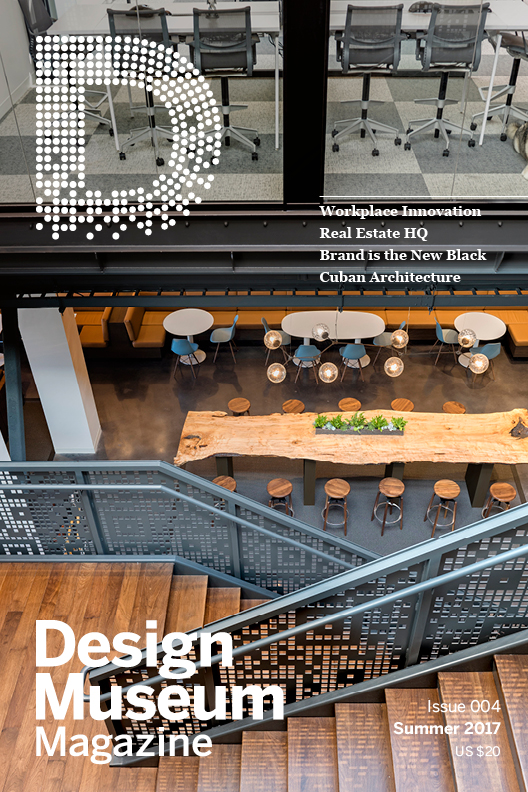Architecture in Revolution
A Designer’s Journey Across Cuba

By Abby Gordon
It is a hot July day and I am 10 days into a 30-day journey across Cuba. The humidity is relentless while the rhythmic beats of salsa and Afro-Cuban music projecting from doorways of colorful homes create a soundtrack for my daily exploration. I’m sharing breakfast with Señor Vitlloch, the chief architect of Sancti Spíritus, one of the oldest Cuban European settlements.
I use my limited Spanish to share with him that I am in Cuba to investigate the impact of the revolution on the built environment and how design and architecture inform the country’s social context. We head to his office in the historic city center, then for a walk around Sancti Spíritus, and I am in awe of how this quaint city celebrates a beautiful calmness, with friendly residents and manicured infrastructure. We follow the outward urban growth starting in the central plaza, a large open park surrounded by colonial gems and a beautiful stone library. Startlingly empty under the stifling sun, it’s a stark contrast to the night before when youth gathered and groups of people danced and passed around rum. The library steps are filling up with students perched around laptops and cellphones — an indication that there is a Wi-Fi hotspot nearby.
With each step, we are tracing the passage of time, and it is easy to notice a correlation between architectural styles and building density. Colonial buildings fade into 1920s bungalows, and before long, the urban fabric dissipates into a series of prefabricated buildings erected after the Revolution. We chat in Spanish as we walk the main boulevard. The occasional car drives by, and the clacking of horse-drawn carriages carrying building materials and food to the outskirts of town creates a tempo for our steps. The density of the city has thinned out and buildings reach heights and lengths that would be unimaginable in the historic center.
All the buildings, whether an apartment complex, a hospital, or a school, have the same heavy, horizontal blocks stacked on top of one another. Señor Vitlloch explains there are factories across the island that prefabricate these building blocks leading to very basic and non-site-specific structures.
Our tour culminates at the José Antonio Huelga baseball stadium. This prefabricated structure is whimsical in color and utilitarian in build. The stadium is set back from the road creating a large park to welcome the throngs of people that come out to cheer on the local team. The stadium took two years to construct and was completed in 1991. While heading back into town, Señor Vitlloch says to me (my best translation from Spanish), “I showed you buildings from the 1500s, 1600s, 1700s, 1800s, and 1900s. I have no buildings from the 21st century to show you. Cuba has no endemic architectural style. Its architecture adapted with its history and the possibility of the next style of buildings remains anyone’s guess.” I think to myself, “That’s why I’m here.”
In 2010, Shepley Bulfinch, a national design firm, established the Howe Traveling Fellowship in memory of late Principal Sandy Howe (1946–2009). This internal award is granted to a staff member, providing the opportunity to travel and investigate the design and culture of a new location of their choosing, with the expectation that upon return, fellows will share their experiences and learnings with the firm. As Shepley Bulfinch’s third Traveling Fellow, I spent the summer of 2015 exploring the built environment of Cuba through the eyes of the Revolution.
A Revolution
Why Cuba? After watching the documentary Unfinished Spaces, I fell in love with the idea of visiting Cuba. The film chronicles an arts-focused campus that Fidel Castro commissioned soon after his socialist regime gained control of the island, and then the campus’ ultimate demise. The documentary artfully weaves the design and construction of the art schools with the political climate of Fidel’s regime. The film was an inspiring starting point for my research.
In 1959 Castro led a Revolution filled with hope for a brighter future and social reform, overthrowing the authoritarian government of Cuban president Fulgencio Batista. At the heart of the architecture representative of the Cuban Revolution is the vision for an academic campus for cultural education. Born out of a golf game between Che Guevara and Castro, the National School of Arts promised to house the greatest art schools in the world. Fidel employed three young, visionary architects to bring the schools to life, resulting in the birth of an architectural style never before seen in Cuba. Catalan arches and robust round gestures were offset by the use of local brick. The construction process brimmed with enchantment as the art students themselves lent a hand in the actual building, all to the beat of the music played by their peers. The Cuban culture and spirit were alive in the forms of the buildings and the unity of their formation.
But by the mid-1960’s, the Soviet Union’s influence on Cuba strengthened and the Cuban Ministry of Construction only allocated funds to work deemed “productive architecture.” The construction of the art schools halted and prefabricated socialist housing began to spring up across Cuba to model the efforts of their Soviet counterparts. The once flourishing and active campus became a modern ruin. Today the schools stand in varying stages of preservation and decomposition. The National School of the Arts symbolizes the highs and lows that the Revolution imparted on Cuba, its people and its physical landscape.
To honor the legacy of Sandy Howe, I headed to Cuba to investigate the impact of the Revolution on Cuba’s built environment and the way Cuban’s interact with their physical environment.
Santiago
On June 26, 2015, loaded up with more cash than I care to admit, I embarked on a once in a lifetime adventure. I began my journey on the eastern end of Cuba in Santiago and followed the route of the Cuban Revolution leading west. The sweltering heat and the layers of humidity warmly welcomed me to an island eclipsed in mystery.
In a four hour walk around Santiago, I viewed 700 years of history and the accompanying architectural styles. The old city contains three main plazas. The neoclassical towers of the Catedral de Nuestra Senora de la Asuncion anchor Parque Cespedes, the main city square. Cars zip by on surrounding streets with furry, yet the Catedral provides a sense of calm.
Santiago is a melting pot — its people and buildings showcase Indigenous, French, Haitian, Spanish, and Afro-Cuban cultures. What struck me most about Santiago was the juxtapositions that are overtly on display. Pristine historical sites are set within crumbling homes and dilapidated buildings. Revolutionary monuments and billboards dominate the landscape and are offset by the surrounding classical architecture. These interesting architectural combinations became thematic for the rest of the places I visited. A perfect example: I visited the Hotel Santiago — built by Cuban architect Jose Antonio Choy in the 90s. The execution of its contemporary, colorful form is up for debate, yet it’s visibility as a beacon across the city makes it an impressive landmark. The interior exudes comfort and class — there is an air of exclusivity as the glass facade of the building reflects the mulled color of the concrete highrise across the street.

Cienfuegos
Halfway through my trip, I found myself in the city of Cienfuegos, on the Southern Coast of the Island. Cienfuegos is affectionately known as the Pearl of the South and the Paris of Cuba. My mission there was to visit the botanical garden, founded in the early 1900s by American sugar baron Edwin Atkins. I wanted to see Atkin’s home which was designed by Shepley, Rutan, and Coolidge, the architectural practice that designed Boston’s South Station in 1898 — and is still in operation as Shepley Bulfinch.
I hired a taxi and recruited the driver, Juavani, to help me reach my goal. I told him I’m an architect and about the Fellowship, and I learned he is a civil engineer fascinated by architecture. It is not uncommon in Cuba for a trained professional to work in tourism as well. After Juavani coerced the security guard at the botanical garden, we received directions to the Atkins house.
The house sits in a former prestigious village that is ripe with deteriorating old mansions and run-down homes. The Atkins House itself is hauntingly beautiful. The facade is damaged and disintegrating and the main door was open allowing views straight to the courtyard. A frail women dressed in white stood in the courtyard and Juavani asked if we could come inside to look around. We entered to see the original grand staircase and banister — Juavani, now my unofficial tour guide, started pointing out minute architecture details other visitors might miss without his help. After carefully stepping over severely damaged floorboards, we made our way to the second floor. There we found colorful laundry hanging on a clothesline and a mother and son who have made a home for themselves in this old, decaying building.

La Habana
On July 17th — my 21st day in Cuba — I made my way to the capital city of La Habana. I spent the morning walking the Malecon, a road that lines the Strait of Florida and forms the spine of La Habana — Malecon translates to sea wall. In the evenings, when traffic dies down, locals and foreigners take to the Malecon and it becomes an outdoor living room where people gather to chat, drink and dance.
Once a playground for the US Mafia, La Habana now sits in varying stages of decay. The city’s outward growth transforms the built landscape from colonials to mid-century modern high-rises, and each neighborhood has its own personality. Habana Vieja, the historic city center, is in the midst of a grand preservation effort. Habana Vieja is an incredible example of smart planning. The Habaguex hotel chain was established by the historian’s office to bring in revenue for preservation work and social projects. The profits from their stores, restaurants, and hotels are fed directly back to the community for schools and restoration work.
Vedado is what locals consider the present-day heart of La Habana, and it is filled with modern engineering marvels and Art Deco apartments, as well as deteriorating mansions. A short taxi ride away, Centro Habana does not have the historic appeal of Habana Vieja or the grand buildings of Vedado, instead, it provides a more authentic invitation to view the real La Habana. The city is a chic, burgeoning economy and a crumbling metropolis mixed together. Portions of the city are impeccably restored while neighboring buildings are very near collapse.
The city is energized, waiting for what the future will bring. Tourism is king in the capital, where new, locally-owned restaurants and privately-run guest houses have the ability to completely transform a family’s economic status. Change is rolling into the country through La Habana. A spirit of hope characterizes the youth of the city —the young thirst for opportunity and the underlying question of what will happen next.
Landing on Cuban soil is, in essence, traveling back in time. The country’s native and imperialistic influences are easy to trace and provide a strong context for discovery. By all accounts, the country is frozen in the 1950s, but there are layers to peel away and lessons to learn from a socialist country that is toying with the idea of modernization. Each city I visited in Cuba tells a unique story through its built environment. With very few new buildings, the past is preserved and the original planning intents are still visible to this day.
A key component to the Howe Traveling Fellowship is sharing the experience with others. While in Cuba, I kept a blog titled 30 days in Cuba (abbyrgordon.tumblr.com). Upon return, I created a short film to showcase my journey at the Shepley Bulfinch office. And with a small team, we developed a photo exhibit, publicly chronicling the trip at the BSA Space.
Formerly of Shepley Bulfinch, designer Abby Gordon spent the summer of 2015 exploring the built environment of Cuba through the eyes of the Cuban Revolution, as the firm’s third Howe Traveling Fellow.

